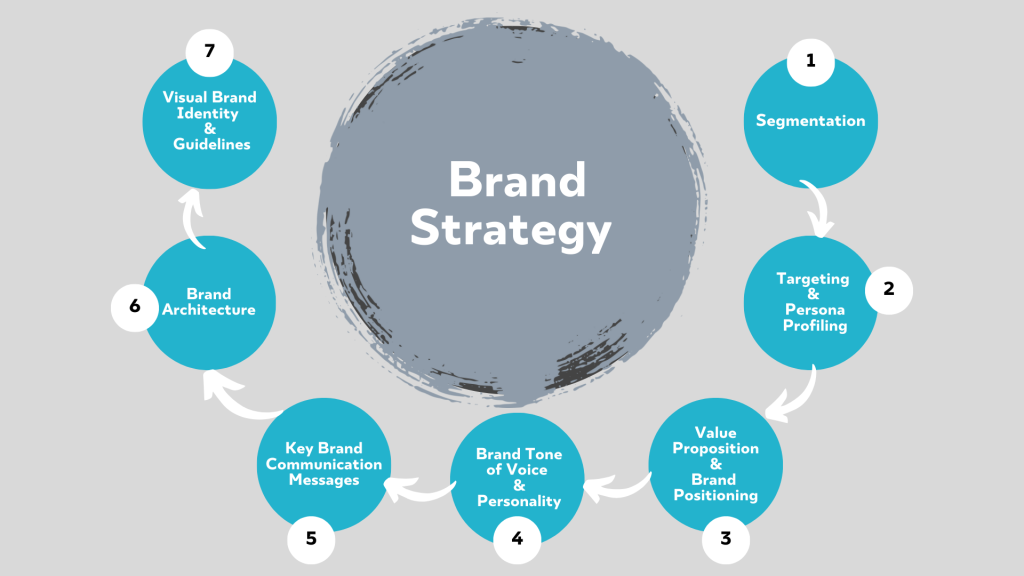Cracking the Code of “Brand Strategy”: A Step-By-Step Blueprint for Any Business

The term “Brand Strategy” often suggests ambiguity, with different interpretations and perceptions depending on who you ask. It tends to trigger a range of responses, leaving many wondering what it truly is. Since it is an essential driver of any business success regardless of their age or size, this article aimed to define it in straightforward, pragmatic terms broken down into easy-to-understand steps.
What is Brand Strategy?
At its core, it is a comprehensive plan that defines how a brand presents itself to the world, establishes its unique identity, and shapes the perception of its audience. It’s a strategic roadmap that outlines the brand’s values, functional and emotional benefits, reasons to believe it, its unique essence, and positioning. The ultimate objective of every brand is to connect with customers on an emotional level. Brand strategy paves the path towards that across every touchpoint of customer interaction.
Components of a Brand Strategy
- Segmentation: To effectively reach your audience, it’s essential to segment them based on demographics, behavior, and preferences. This allows for tailored marketing efforts that resonate with specific groups, enhancing the likelihood of engagement and conversion.
- Targeting & Persona Profiling: Choose the segments that align with your brand’s goals and create detailed buyer personas. Understand their needs, motivations, and pain points to craft personalized messaging.
- Value Proposition & Brand Positioning: Articulating what sets your brand apart from competitors is a pivotal aspect of brand strategy. Clearly defining why customers should choose your brand and how you want it to be perceived lays the groundwork for effective communication and differentiation.
- Brand Tone of Voice and Personality: Consistency in your brand’s tone and personality is paramount. Whether your brand is friendly, authoritative, playful, or somewhere in between, maintaining this consistency is key to building brand recognition and trust.
- Key Brand Communication Messages: Crafting compelling storytelling messages that convey your brand’s values, benefits, and solutions is central to effective brand communication. These messages should align seamlessly with your value proposition and resonate deeply with your target audience.
- Brand Architecture: In cases where you have multiple product lines or sub-brands, establishing a clear brand architecture is crucial. This framework defines the relationships between them, preventing brand confusion and ensuring a cohesive brand ecosystem.
- Visual Brand Identity and Guidelines: Your visual brand identity, including elements like your logo, color palette, typography, and design elements, is the visual representation of your brand. Establishing brand guidelines ensures that all visual materials maintain consistency, reinforcing your brand’s image and message.
Conclusion
In a world where consumer choices are abundant, brand strategy serves as the compass that guides your brand towards success. Whether you’re a market leader or a startup visionary, putting together a brand strategy is the only path to achieving your business goals and securing a lasting place in the hearts and minds of your customers.
about the author

Nader Elhamy
A senior marketing, commercial management & Digital Strategist with over 20 years’ experience.
Founder & Managing Partner of Toolbox Marketing Consulting.
Member of the commercial management team, which conducted the turnaround of Al-Ahram Beverages Company.
He has launched, re-launched and managed some of Egypt’s largest and most successful brands across a variety of sectors including FMCG, Real Estate, Destinations, Food & Beverages, Hospitality, Textiles, Retail, Media, White Goods, Electrical Accessories, and Manufacturing.




